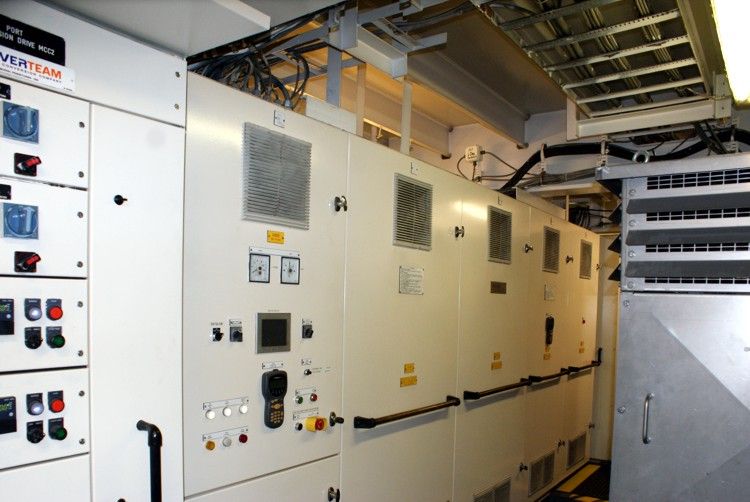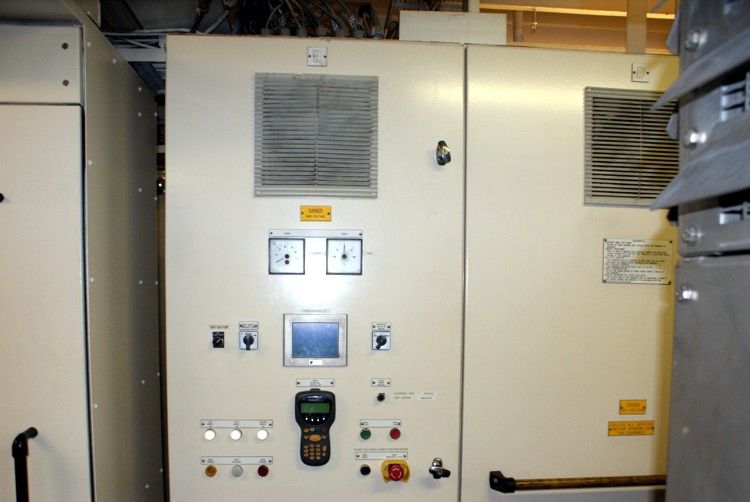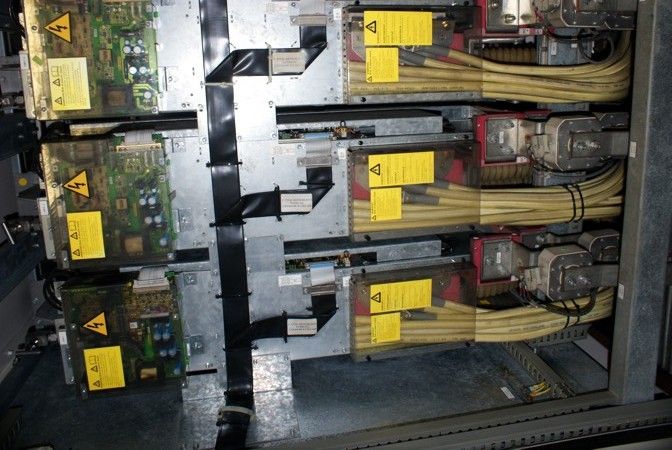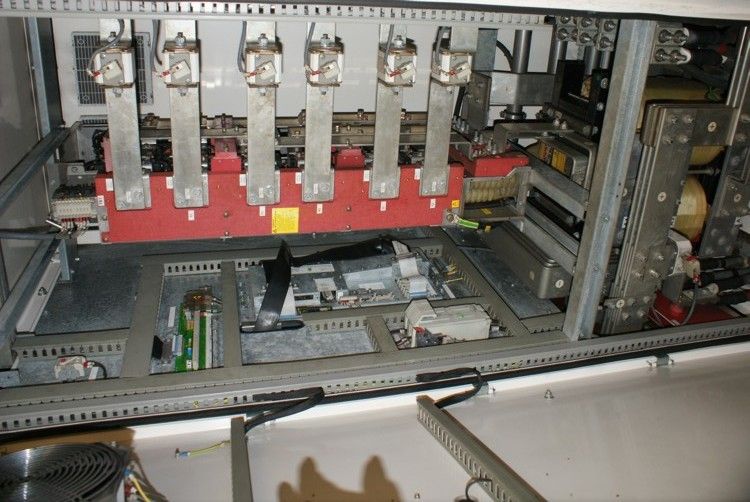Don-
That is some nice switchgear.
With the advent of AC drives (VFD's), I really don't see DC motors any more.
I think if you need near full torque and speed regulation down to almost zero rpm's, probably DC motors are still the way to go.
Here are 6 - 2000 hp synchronous motors at a local rainwater runoff lift station.
Originally built around 1945 by the Corps.
Not really large motors by industrial standards, the local refinery has a 32,000 hp motor.
I had a proposal to renovate this station, and although the switchgear and motors are considered modern in that they are all dead-front, etc, the wiring diagrams do not use standard symbols, and the nomenclature is very misleading, such as the label "vacuum breakers".
You would thing vacuum breakers would be the electrical variety, but no, they are actually pneumatic valves on the large water pipes that open to prevent siphoning of the water through the pipe.
A couple of smaller motors also at 500 hp and 300 hp.
It is an interesting combination of equipment, with GE 2000 hp motors, Westinghouse switchgear and motor-generator sets, and a Fairbanks Morse 300 hp motor.
The motor generators use an AC motor to drive a DC motor, to create the DC field for the 2000 hp motors.
The synchronous motors have two medium voltage breakers per motor, for a partial winding start. I have not seen partial winding start synchronous motors other than these.
















